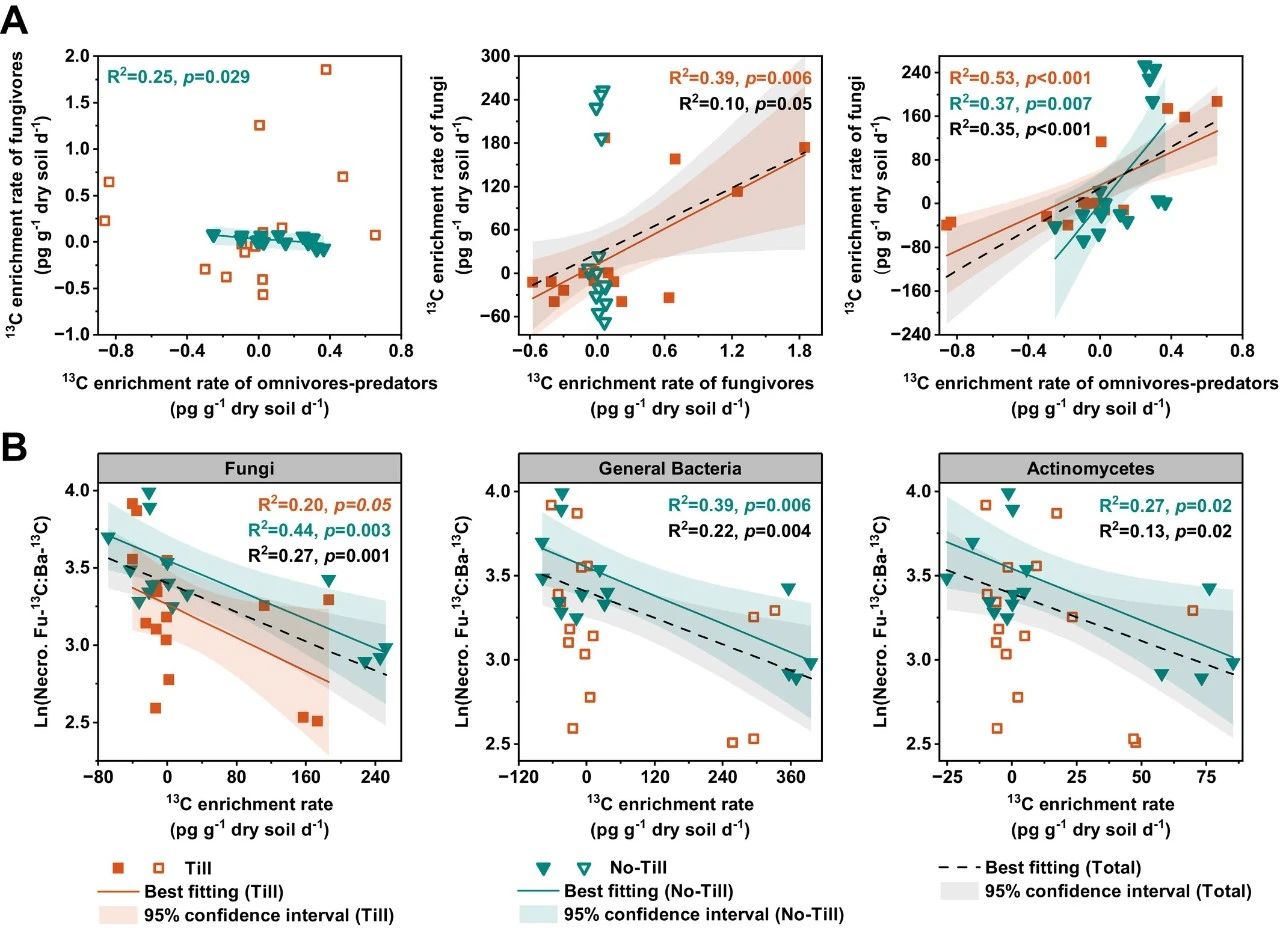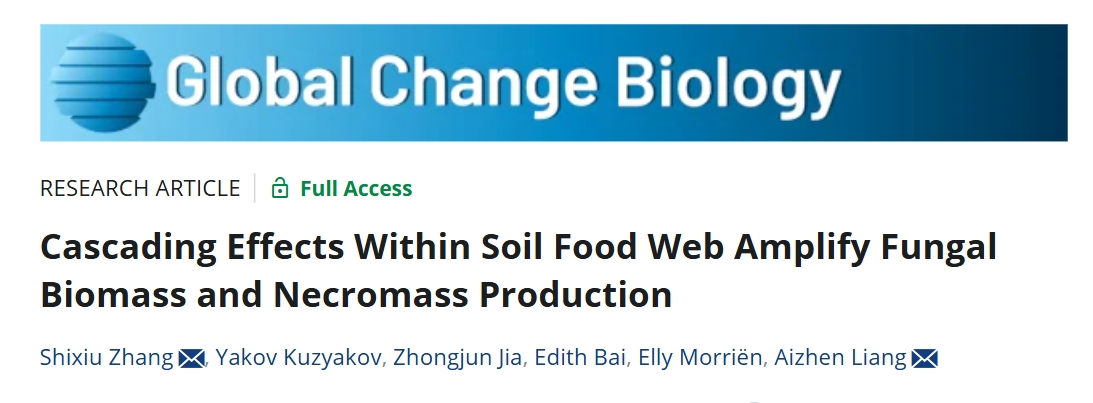
题 目:Cascading Effects Within Soil Food Web Amplify Fungal Biomass and Necromass Production
译 名:土壤食物网中的级联效应对微生物生物量和残体的影响
期 刊:Global Change Biology
发表时间:2025.05.19
第一作者:张士秀 副研究员
通讯作者:梁爱珍 研究员
题 目:Cascading Effects Within Soil Food Web Amplify Fungal Biomass and Necromass Production
译 名:土壤食物网中的级联效应对微生物生物量和残体的影响
期 刊:Global Change Biology
发表时间:2025.05.19
第一作者:张士秀 副研究员
通讯作者:梁爱珍 研究员
题 目:Cascading Effects Within Soil Food Web Amplify Fungal Biomass and Necromass Production
译 名:土壤食物网中的级联效应对微生物生物量和残体的影响
期 刊:Global Change Biology
发表时间:2025.05.19
第一作者:张士秀 副研究员
通讯作者:梁爱珍 研究员
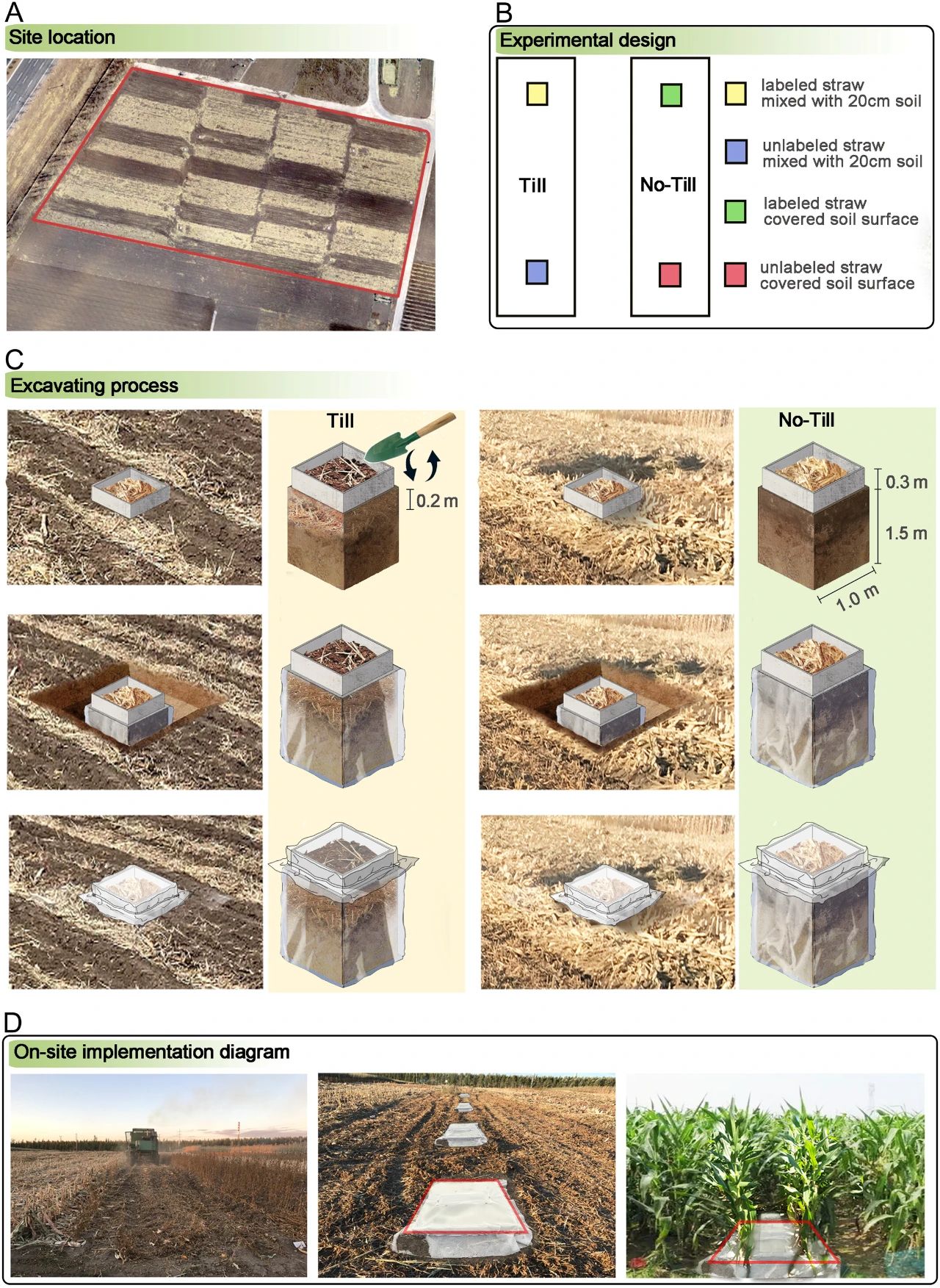
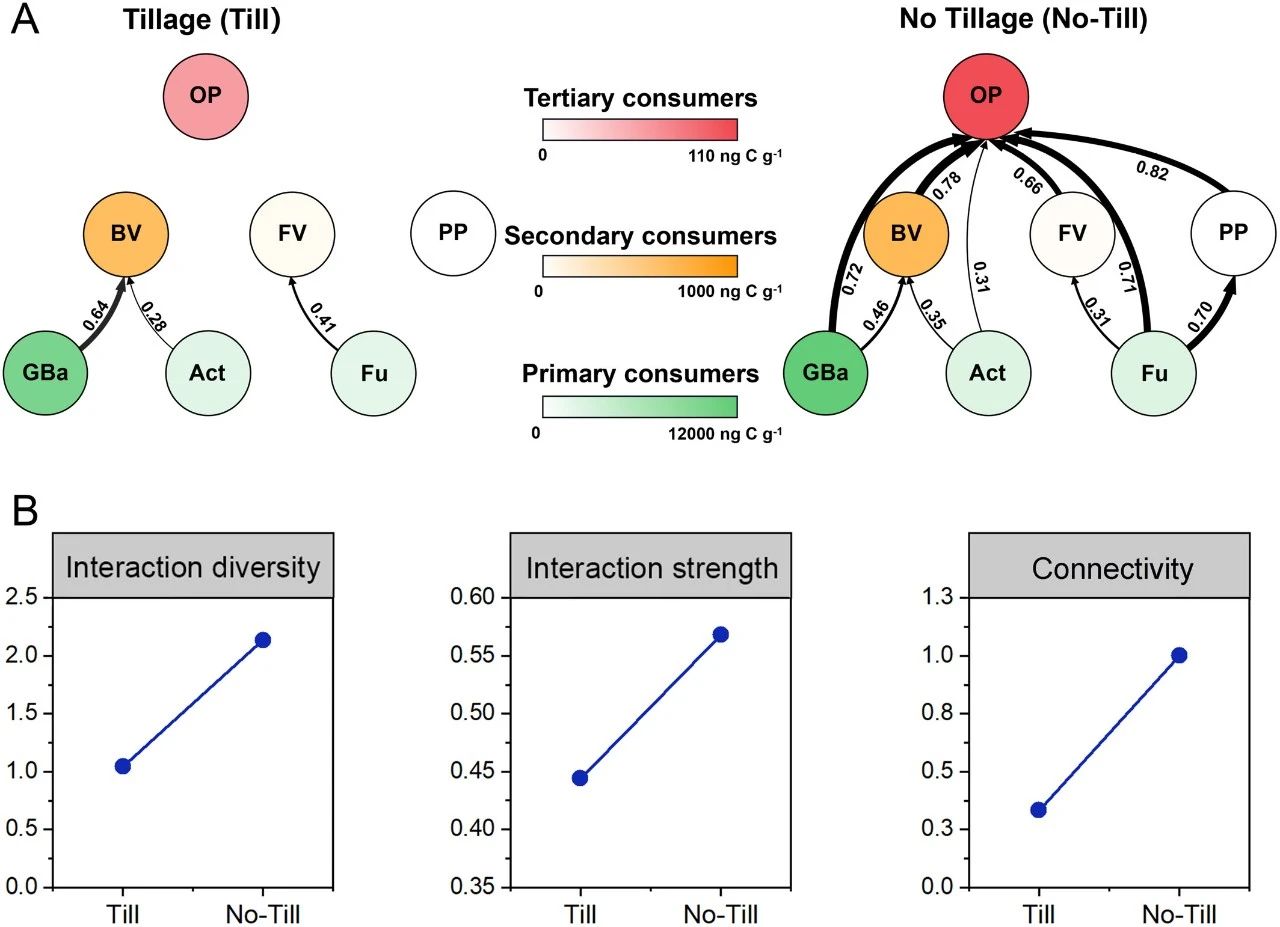
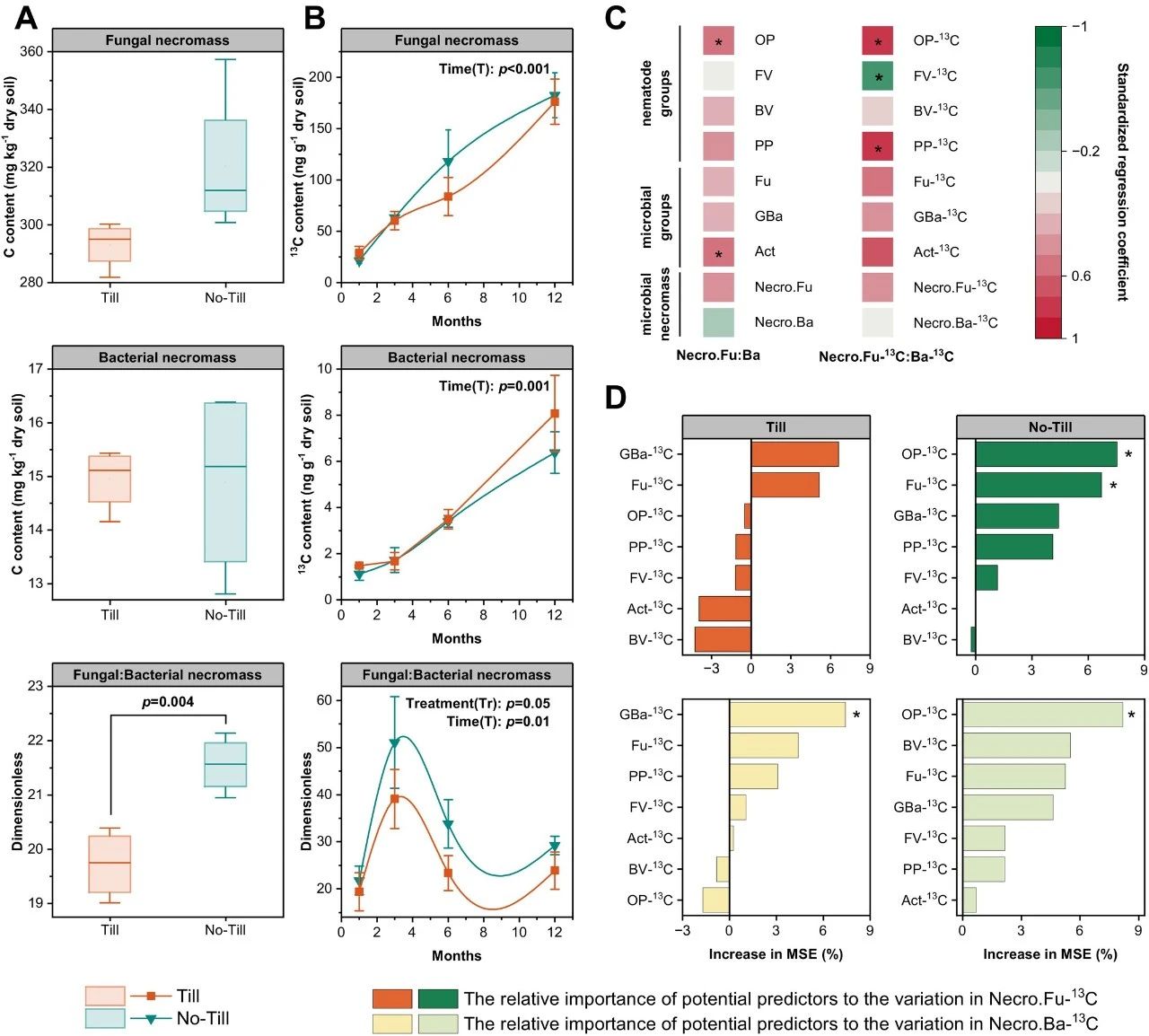 Fig. 3.Microbial necromass patterns and their associations with soil food web components. (A, B) Variation in microbial necromass observed from both the long-term field experiment and the 13C in situ tracing experiment. (C) Pearson correlation heatmap showing the relationships of fungal-to-bacterial necromass ratio with nematode and microbial groups across tillage practices in both the long-term field and 13C in situ tracing experiments. (D) Relative importance of nematode and microbial groups contributing to the variation in fungal and bacterial necromass under tillage practices (till vs. no-till) in the 13C in situ tracing experiment. Importance is expressed as the percentage increase in mean square error (MSE) from the random forest analysis. Necro.Fu:Ba, Fungal-to-bacterial necromass ratio; Necro.Fu, Fungal necromass; Necro.Ba, Bacterial necromass; OP, Omnivores-predators; FV, Fungivores; BV, Bacterivores; PP, Plant-parasites; Fu, Fungi; Act, Actinomycetes; GBa, General bacteria.
Fig. 3.Microbial necromass patterns and their associations with soil food web components. (A, B) Variation in microbial necromass observed from both the long-term field experiment and the 13C in situ tracing experiment. (C) Pearson correlation heatmap showing the relationships of fungal-to-bacterial necromass ratio with nematode and microbial groups across tillage practices in both the long-term field and 13C in situ tracing experiments. (D) Relative importance of nematode and microbial groups contributing to the variation in fungal and bacterial necromass under tillage practices (till vs. no-till) in the 13C in situ tracing experiment. Importance is expressed as the percentage increase in mean square error (MSE) from the random forest analysis. Necro.Fu:Ba, Fungal-to-bacterial necromass ratio; Necro.Fu, Fungal necromass; Necro.Ba, Bacterial necromass; OP, Omnivores-predators; FV, Fungivores; BV, Bacterivores; PP, Plant-parasites; Fu, Fungi; Act, Actinomycetes; GBa, General bacteria.
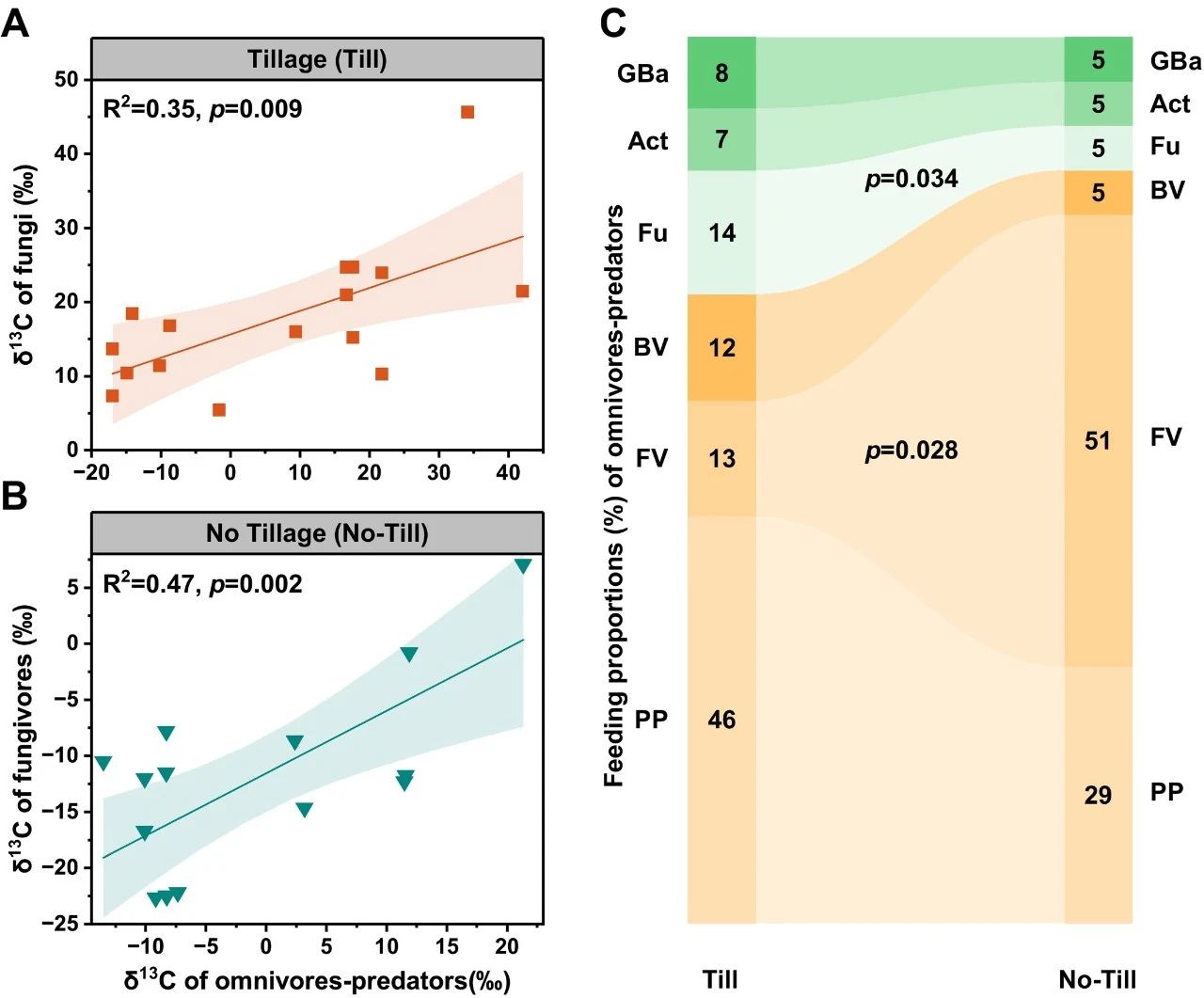 Fig. 4.Feeding strategy of omnivores-predators depending on tillage practices. (A, B) 13C signature-based analyses of food source traceability for omnivores-predators under tillage and no-tillage practices. (C) Comparison of feeding proportions of omnivores-predators between tillage and no-tillage practices. FV: Fungivores; BV: Bacterivores; PP: Plant-parasites; Fu: Fungi; Act: Actinomycetes; GBa: General bacteria.
Fig. 5.Top-down analyses along the food chain depending on tillage practices (till: Tillage, no-till: No-tillage). (A) Relationships among omnivores-predators, fungivores, and fungi. (B) Relationships between microbial groups and the ratio of 13C-fungal to 13C-bacterial necromass (Necro.Fu-13C:Ba-13C). Black dashed lines indicate overall model fits; tangerine and turquoise lines indicate trends under tillage and no-tillage, respectively.
Fig. 4.Feeding strategy of omnivores-predators depending on tillage practices. (A, B) 13C signature-based analyses of food source traceability for omnivores-predators under tillage and no-tillage practices. (C) Comparison of feeding proportions of omnivores-predators between tillage and no-tillage practices. FV: Fungivores; BV: Bacterivores; PP: Plant-parasites; Fu: Fungi; Act: Actinomycetes; GBa: General bacteria.
Fig. 5.Top-down analyses along the food chain depending on tillage practices (till: Tillage, no-till: No-tillage). (A) Relationships among omnivores-predators, fungivores, and fungi. (B) Relationships between microbial groups and the ratio of 13C-fungal to 13C-bacterial necromass (Necro.Fu-13C:Ba-13C). Black dashed lines indicate overall model fits; tangerine and turquoise lines indicate trends under tillage and no-tillage, respectively.
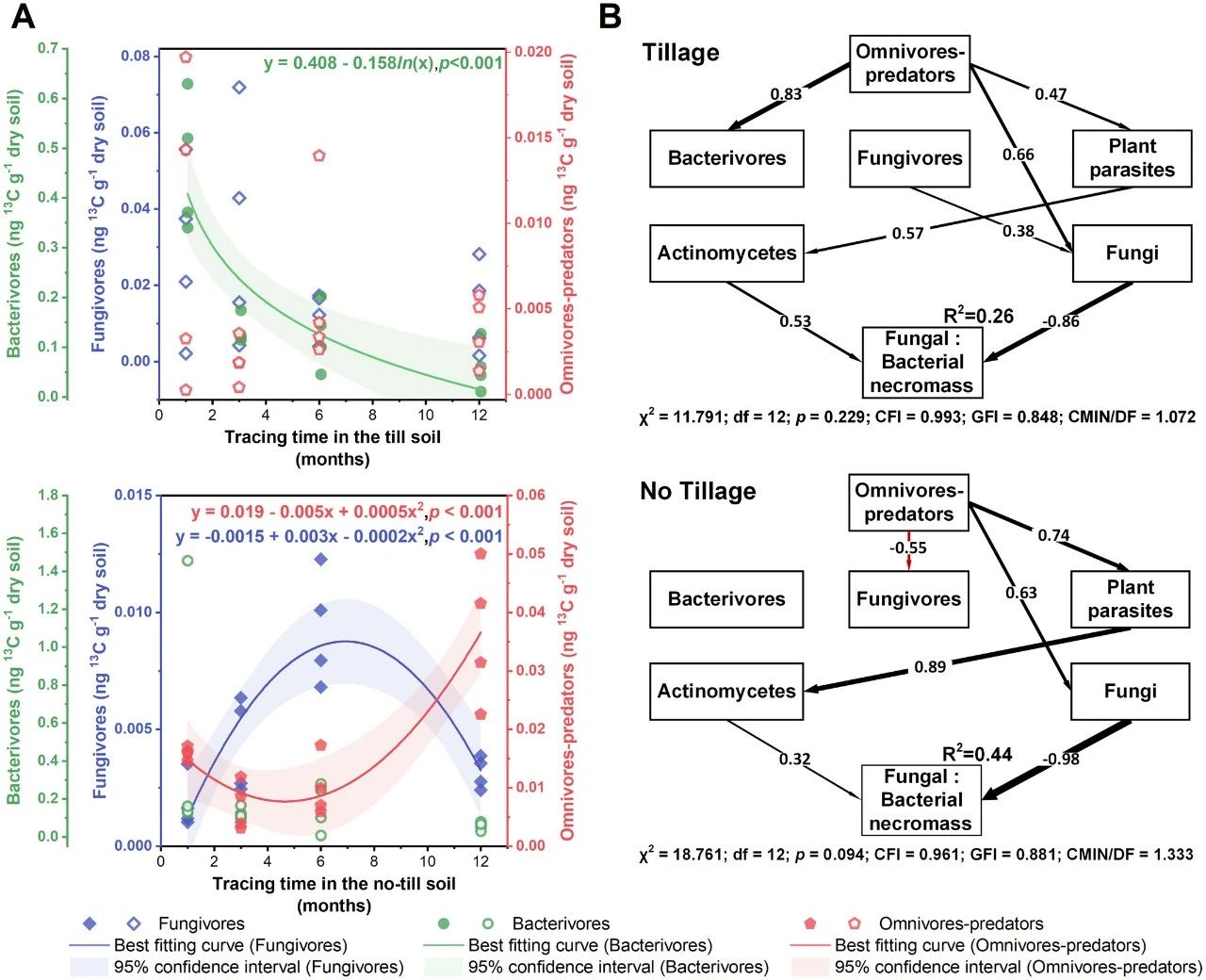 Fig. 6.Associations of omnivores-predators with microbivores and their impacts on microbial necromass depending on tillage practices. (A) Best-fit models depicting the dynamics of 13C content (ng g−1 dry soil) in omnivores-predators, bacterivores and fungivores under tillage and no-tillage practices throughout the tracing period. (B) Structural equation modeling (SEM) showing top-down control pathways of fungal-to-bacterial necromass ratio by omnivores-predators. Black arrows indicate positive correlations, red arrows negative correlations. The numbers on the arrows are pathway coefficients, and the width of the arrows indicates the strength of the pathway coefficients.
Fig. 6.Associations of omnivores-predators with microbivores and their impacts on microbial necromass depending on tillage practices. (A) Best-fit models depicting the dynamics of 13C content (ng g−1 dry soil) in omnivores-predators, bacterivores and fungivores under tillage and no-tillage practices throughout the tracing period. (B) Structural equation modeling (SEM) showing top-down control pathways of fungal-to-bacterial necromass ratio by omnivores-predators. Black arrows indicate positive correlations, red arrows negative correlations. The numbers on the arrows are pathway coefficients, and the width of the arrows indicates the strength of the pathway coefficients.
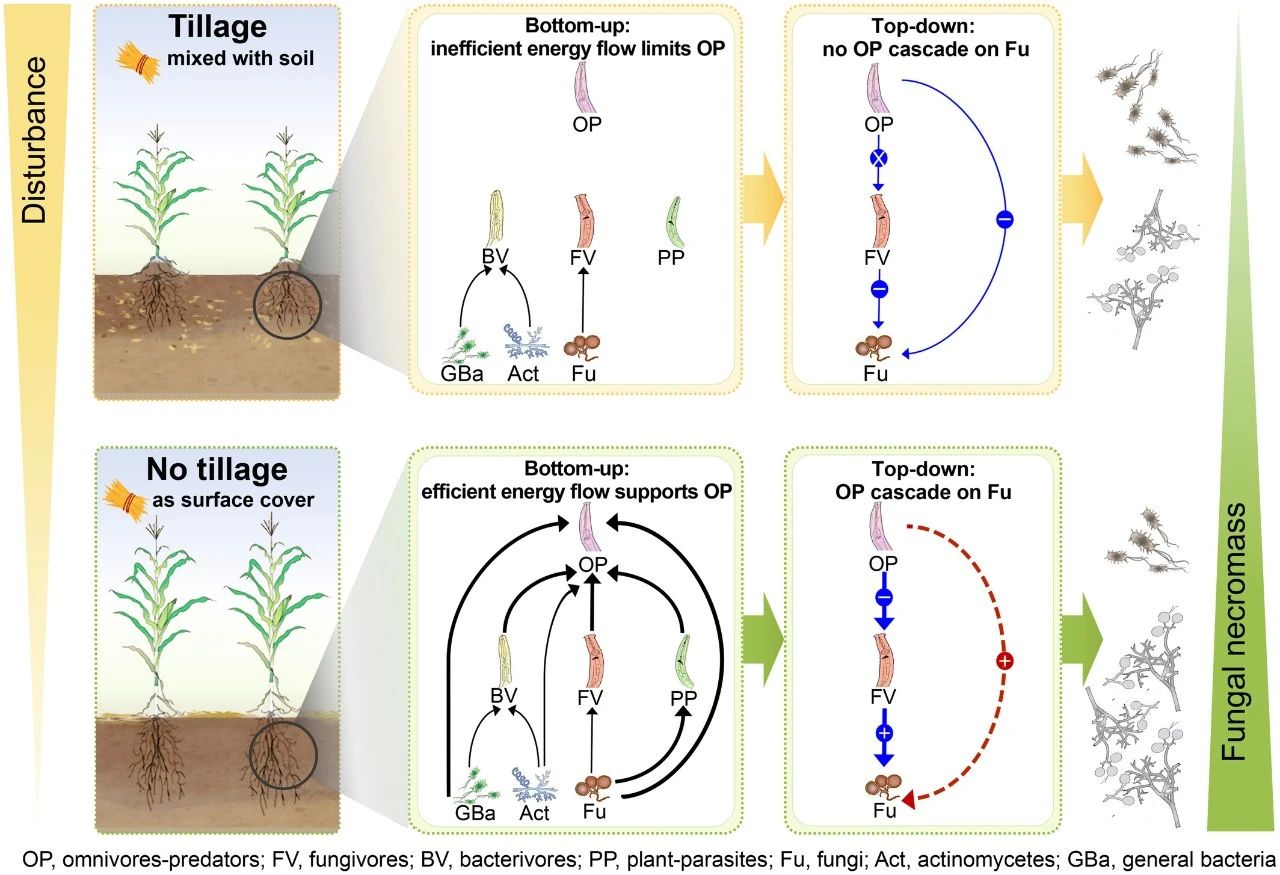 Fig. 7.A framework illustrating interactions of bottom-up and top-down forces driving the impact of omnivores-predators on fungi-fungal necromass dynamics depending on tillage practices. Black arrows represent resource-driven, bottom-up energy flow pathways, with arrow thickness indicating flow intensity. Blue arrows represent predator-induced, top-down regulation from higher to lower trophic levels, with “−” or “+” indicating reduction or increase of lower trophic groups. Red dashed arrows represent trophic cascading effects, with “+” indicating amplification.
综上所述,这些微小但普遍存在的杂食性捕食性线虫通过增强*生物量和活性,对腐殖质形成产生了不成比例的影响。鉴于土壤食物网的内在复杂性和本研究的观测性质,针对多营养级相互作用的进一步操纵实验对于揭示微生物腐殖质形成机制至关重要。
Fig. 7.A framework illustrating interactions of bottom-up and top-down forces driving the impact of omnivores-predators on fungi-fungal necromass dynamics depending on tillage practices. Black arrows represent resource-driven, bottom-up energy flow pathways, with arrow thickness indicating flow intensity. Blue arrows represent predator-induced, top-down regulation from higher to lower trophic levels, with “−” or “+” indicating reduction or increase of lower trophic groups. Red dashed arrows represent trophic cascading effects, with “+” indicating amplification.
综上所述,这些微小但普遍存在的杂食性捕食性线虫通过增强*生物量和活性,对腐殖质形成产生了不成比例的影响。鉴于土壤食物网的内在复杂性和本研究的观测性质,针对多营养级相互作用的进一步操纵实验对于揭示微生物腐殖质形成机制至关重要。
https://onlinelibrary.wiley.com/doi/10.1111/gcb.70235





